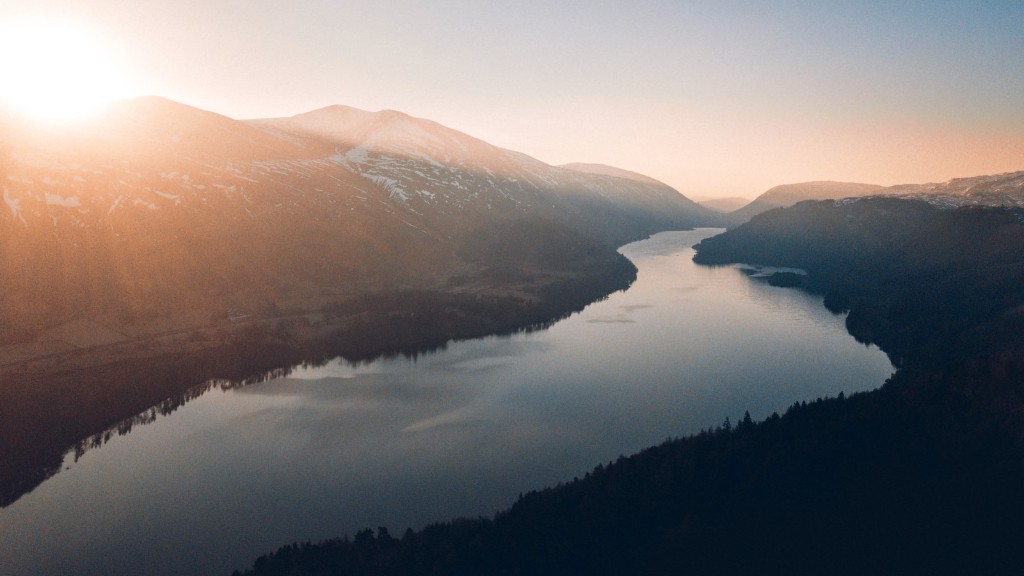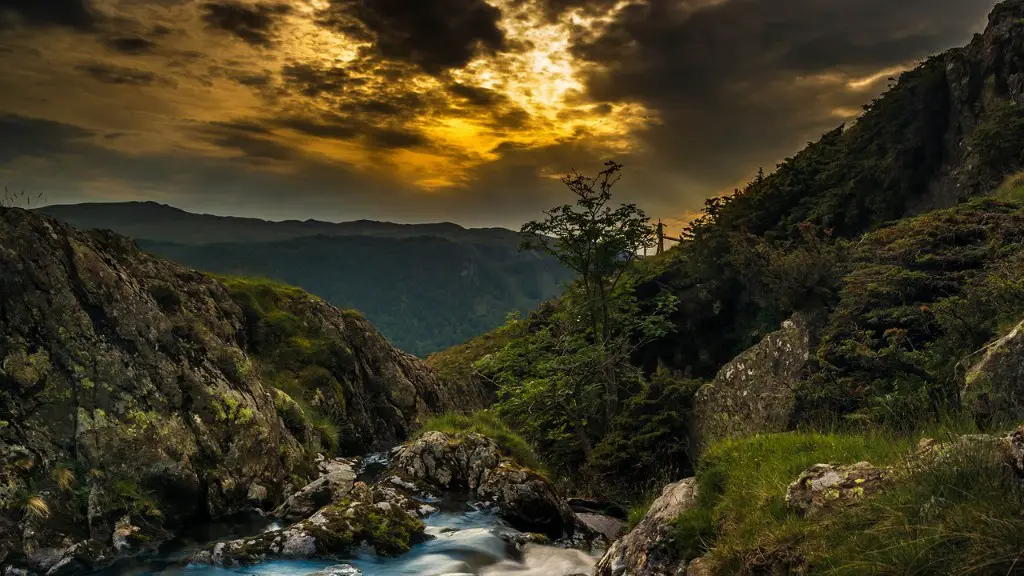The Upper Mississippi River is a source of natural beauty and many unique cultural attractions. It’s one of the most important waterways in the US, running through multiple states and supplying an abundance of energy and economic activity. Located on the “North American central flyway”, the Upper Mississippi River is home to approximately 400 species of birds, some of which migrate as many as 3,000 miles each year.
The Upper Mississippi River begins at Lake Itasca in Minnesota, which is surrounded by pristine boreal forests, and flows 2,350 miles to the confluence of the Mississippi and Missouri Rivers at St. Louis. Along the way, it collects water from its tributaries which include the Minnesota, St Croix, Wisconsin, Illinois, and Des Moines rivers.
Apart from its ecological significance, the Upper Mississippi River also plays an important role in the social and economic development of some of the states it passes through. For example, the Upper Mississippi river plays a crucial role in the recreational and touristic activities of certain cities. The region has thousands of acres of public land and dozens of parks dedicated to recreational activities, including hunting, camping, and fishing. Additionally, various state and provincial parks situated along the River offer boat-launching facilities, overnight camping, and shoreline fishing.
Furthermore, the Upper Mississippi River is responsible for supplying drinking water and irrigation water to many of the towns and cities located along its banks. By providing a steady supply of water, it enables public and commercial enterprises to thrive. Some industrial plants, such as power plants and fish hatcheries, also benefit from the constant flow of water.
From a conservation standpoint, the Upper Mississippi River is an essential habitat for a variety of native and migratory animals. Fishing is popular in the area and a variety of game fish are regularly caught in the river, including bass, catfish, and walleye. In recent years, efforts have been made to replenish the river’s fish populations and improve the water quality.
Despite its many advantages, the Upper Mississippi is no stranger to human-induced problems. Over the past few decades, human activity has polluted the river and destroyed its habitats. Non-point source water pollution, caused by agricultural runoff and urban development, is a major challenge. In recent years, conservation groups have been working hard to reduce the impact of this pollution.
Additionally, the Upper Mississippi River has been at the center of many debates regarding who has the right to use the river. In particular, navigation has been a major source of contention among proponents of the waterway. At the heart of the debate is the fact that the navigation rights between property owners and recreational users are not clearly defined.
Impact on Local Communities
The presence of the Upper Mississippi River has a profound influence on local communities and has been a driving force in the formation of local culture. Many people live near the Upper Mississippi River, making it a source of unique cuisine, traditions, and history. The relationship between the river and the people is distinctly mutual; though the Upper Mississippi River provides sustenance, work, and recreation for the residents, many residents are essential to the conservation of this valuable resource.
The river sustains many local-level economic activities despite a decline in the commercial barging industry on the Upper Mississippi. Many communities depend on the river for their livelihood. There have been some efforts to promote ecotourism, in part as a way to improve the local economies. Ecotourism may include guided nature hikes and bird-watching excursions, opportunities to experience the living history of the area, or recreational boating.
Residents living near the Upper Mississippi River also benefit from the numerous cultural events that are held along the river. These events include creative endeavors such as the La Crosse Music Festival and the annual Wild Rice Festival. Furthermore, there are some communities that are specifically dedicated to preserving the history and culture of the river, such as Prairie du Chien, which has been a major trading center on the river since the 18th century.
Damage from Floods and Droughts
The impact of weather is a crucial issue for the Upper Mississippi River. The river is prone to flooding and droughts, and these events can have a devastating effect on local communities. During a flood, the river’s banks can overflow and cause soil erosion and damage to buildings and homes. On the other hand, a drought can starve the river of water and cause shipping traffic to come to a halt. Local businesses can suffer as a result of either situation.
Due to the unpredictability of the river’s water levels, it is difficult to predict the degree of damage caused by flooding or droughts. Additionally, the constantly-changing weather conditions can further complicate matters. In order to protect communities against flooding and droughts, the government has instituted several measures including constructing dams and levees and creating reservoirs. These measures offer additional protection against floods and can even help to regulate the river’s water levels during droughts.
Despite these measures however, floods and droughts can still cause immense damage. As a result, affected communities and organizations continue to advocate for additional flood control measures and drought relief programs.
The Role of Conservation
Given the significance of the Upper Mississippi River and its surrounding environment, a concerted effort has been made to maintain the river’s ecological health and conserve its resources. Several government dam projects have been undertaken to adjust the flow of the river and regulate its water levels for recreational and commercial purposes. In addition, there are several conservation organizations that are dedicated to the protection and restoration of the river. Some of these organizations are involved in research studies, while others are focused on engaging the public in education and conservation efforts.
Various local, state and federal government agencies have adopted management plans that have aimed to conserve the biological and cultural resources associated with the Upper Mississippi River. These plans vary in scope but they all focus on the need to protect and restore habitats, enhance water quality and promote the preservation of the river’s biodiversity.
Overall, the presence of the Upper Mississippi River has had a profound influence on the local communities and the environment. Though the river is prone to flooding and droughts, conservation efforts have made significant progress in restoring the integrity of the river. The effort to preserve this valuable resource has been augmented by the dedication of local communities, government agencies and non-profit organizations.
Conclusion
The Upper Mississippi River is an immensely valuable resource and its preservation is essential to ensure the sustainability of the local communities and the environment. Through continued conservation efforts and the support of local communities, the river can be protected and its resources safeguarded.




